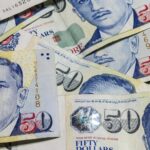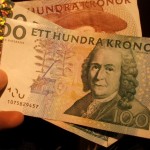The yen traded little changed against the US dollar, but was poised for first weekly advance in four weeks, as minutes from the Bank of Japans last policy meeting in March, revealed policy makers didnt feel pressured to extend the stimulus program, as inflation started to pick up.
USD/JPY hit a session low at 101.33 during early Asian trading session, after which the pair consolidated to trade little changed at 101.60, adding 0.06% for the day. Support was likely to be found at March 19th low, 101.30, while resistance was to be met at April 10th high, 102.14. The pair headed for a 1.6% gain this week, the first in a month.
Minutes from the the Bank of Japans last policy meeting suggested that officials didnt see an imminent need for additional stimulus measures, as inflation started to rise, although market players expectations call for further monetary easing in the near future.
The board members of the central banks Governing Council “expressed the view that it was appropriate for the BOJ to continue to steadily pursue quantitative and qualitative monetary easing in accordance with the current guidelines, as Japans economic and price developments had been broadly in line with the forecasts presented in October 2013,” the minutes showed.
“Japan’s economy has continued to recover moderately as a trend, albeit with some fluctuations due to the consumption tax hike,” the central bank said in a statement on April 8.
“Private consumption and housing investment have remained resilient as a trend with improvement in the employment and income situation,” it added.
The Japanese government increased the sales-tax from 5 percent to 8 percent on April 1st, for the first time since 1997. Experts forecast that the nation’s economy may contract by 3.5% this quarter, the most since the first quarter of 2011, when the country was struck by an earthquake, followed by tsunami.
Officials will keep their pledge of targeting an annual increase in the money supply of 60 trillion yen to 70 trillion yen, according to all 36 economists in a Bloomberg News survey, while 44% of them predicted the central bank will expand monetary stimulus in July.
The Bank of Japan next meeting is scheduled for April 30, when the bank will release its latest growth and inflation forecasts.
Meanwhile, greenbacks demand was supported after initial jobless claims fell to 300 000 in the week ended April 5th, the weakest since May 2007, from 332 000 in the previous week, that was higher than previously estimated. The data suggested American employers felt more optimistic that demand will pick up soon, after an unexpected slump at the beginning of the year, related to inclement weather in the US.
“I’m pretty optimistic about the labor market,” said in a Bloomberg interview Thomas Simons, a money market economist at Jefferies LLC in New York, whose forecast for 310,000 claims was the lowest in a poll by the same media. “Slack in the labor force should start to be absorbed more quickly, and that should put some upward on wages as well.”
The annualized index of producer prices (PPI) in the US probably rose to 1.1% in March, according to the median estimate by experts, from 0.9% in February. This index reflects the change in prices of over 8 000 products, sold by manufacturers during the respective period.
Nation’s annualized core PPI, which excludes prices of volatile categories such as food and energy, probably remained steady at 1.1% in March. This indicator is quite sensitive to changes in aggregate demand, thus, it can be used as a leading indicator for economy.
The Bureau of Labor Statistics is expected to publish the official PPI readings at 12:30 GMT.





